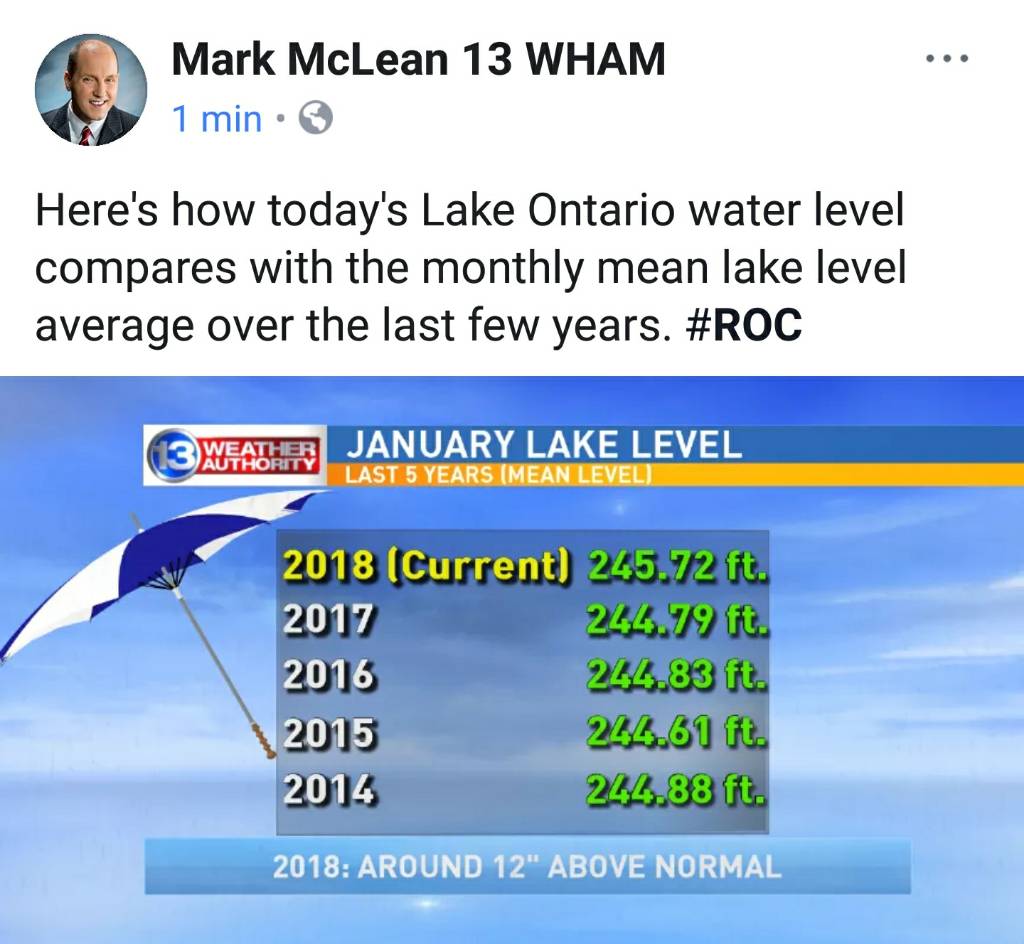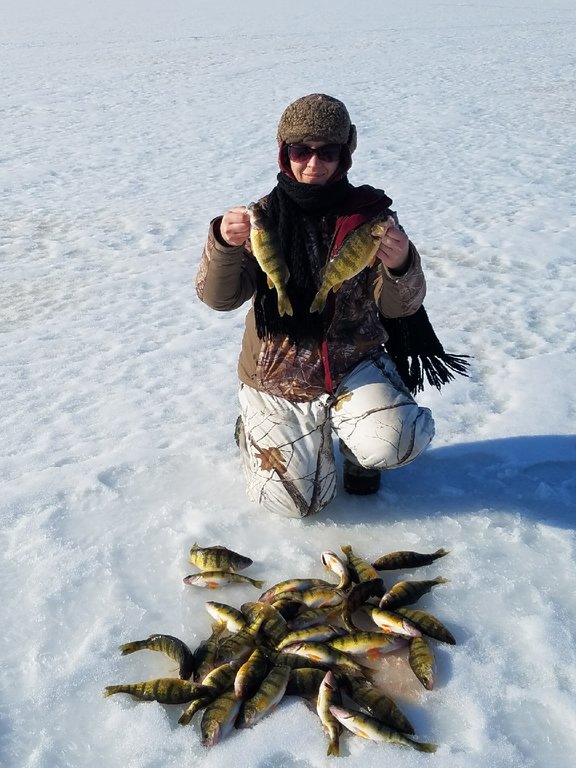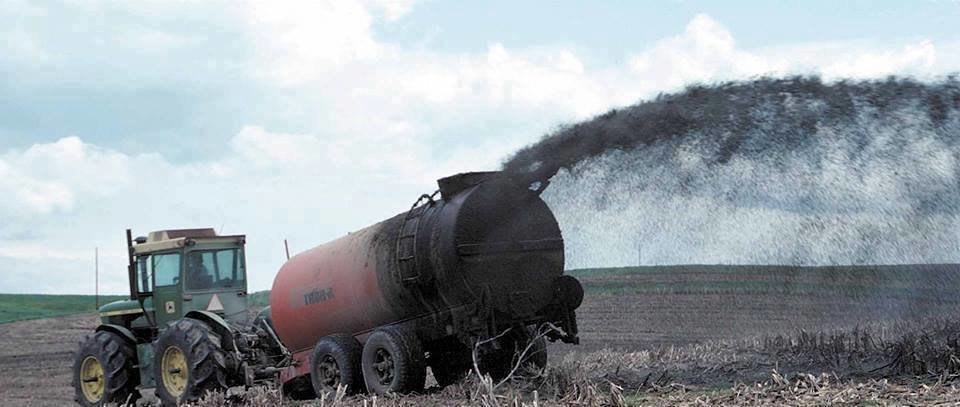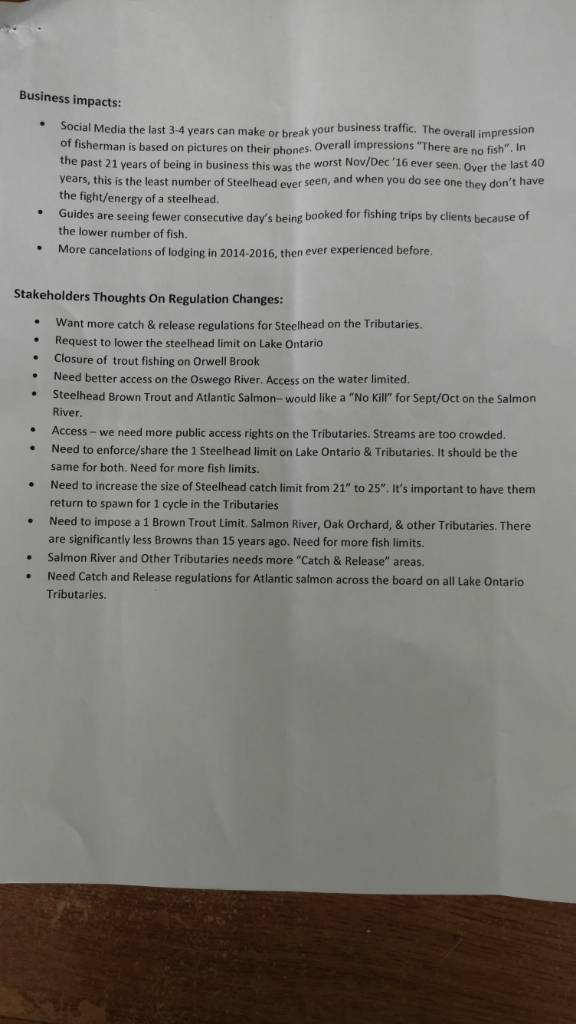

Lucky13
Members-
Posts
1,230 -
Joined
-
Last visited
Content Type
Profiles
Forums
Events
Gallery
Store
Everything posted by Lucky13
-
I stayed late on Honeoye a few times. Jigging through the whole water column in 10 ft of water or less, the crappies we got were usually suspended. The more successful guys were using lanterns on the ice. This was quite a while ago at the north end. I would be hesitant to go out on new water at night after these freeze thaw/rain cycles unless I had checked it first during daylight, a lot of posts around on other sites about holes getting bigger and dark spots opening up in the rain and melt of the last few days. Creepers, spud, headlamp, etc.......
-
http://ijc.org/en_/islrbc/reg_summary The lake is about 1 foot over long term average, they are letting out about 250,000 cfs, and long term discharge for last week was about 225000 cfs. They compute the lake is a foot lower than it would be with no control at the St Lawrence. Supply into the lake was about 350,000 cfs while the average supply at this time of the year is about 248,000 cfs. A lot of runoff from that last melt, and a lot of water coming down Niagara. I could not access the UACE pages, maybe that part of the government is still shut down!
-
This is more consistent with the theory that the huge year class this year is the hatch that did well due to the low alewife numbers after the winter of 2013-14, 9-10" fish. If the theory is correct, next year should be even better, and the survivors of the 9-10 fish this year should be 11-13". The females can't keep their mouths shut? (Now I've stepped in it!) Glad to hear that, imagine the tip-up fields and additional jiggers you'd encounter once the word got out there! Seriously, I know there have been few browns caught out of Honeoye, but not enough to make them a conscious target. When I said "sometimes I'm not so sure about you", I was using the generic, not the specific. Your posts are always informative, and not bombastic. But there were guys posting about all the "hogs" they were getting.
-
-
Third Creek yesterday, as posted on Iceshanty. I can't imagine what it was like at the point with the parking problems they have been having. I've been hearing from one member here about "there is no such thing as overfishing", but the Sodus reports indicate that the bigger fish have likely been hit hard already, size has gone down in the reports and people are having to sort through lots of small ones to get a few over 9". Three weeks ago it was lots of > 12". https://www.facebook.com/chris.trine.9/videos/o.90983079273/10215156597419162/?type=2&theater
-
Go on weatherbug.com, there is a camera for Sea Breeze Amusement Park. Looks to me like the entire north end of the bay is frozen, although the snow has blown off out from the launch and folks might think it is open water. However, I've never seen open water with a pressure ridge running right across the bay through it. It has not been that warm yet, I think you are seriously jumping the gun.
-
Are you sure they weren't small white bass. We used to hammer them at Russell Station, some up to 2lbs once in a while. They look almost just like a striper.
-
Oh come on, Ogrob56, yer picture doesn't look that old! Easier to remember than keeping straight 200, 400, 600 copper, all them dipsy's, etc ad infinatum!!! I'm thinking "Benthic" and "Pelagic"? You need to understand these terms to understand the Fish Community Objectives for the Lake, the Guidance Document for overall management on both sides of the border. This is the link: http://www.glfc.org/pubs/FisheryMgmtDocs/Fmd17-01.pdf Please note that this is an updated document that just came out in July of 2017, but based on what was said in the spring, there should be no major changes from the earlier Objectives.
-

ANOTHER good reason to wear your life jacket
Lucky13 replied to Sk8man's topic in Open Lake Discussion
I used to work on Irondequoit Bay collecting water samples from an anchored pontoon boat, and it was common to get nearly hit by the big bruisers headed from the Bounty to the channel. A lot of boaters have no idea about the "rules of the road" on the water, e.g. 5mph within 200 ft of an anchored boat on I-Bay, and the 25 mile speed limit out there was a joke to somebody who had a cigarette boat and thought nothing of buying 150 gallons of marine fuel for a weekend. We had a diver down once, and a guy ran right over the dive flag, just lucky no one was surfacing at that point. -
Cisco were stocked in Irondequoit Bay in 2012 (9000), 2013 (9000), 2014 (145,000), and 2015(100,000). in 2015,1000 were stocked in Chaumont Bay. Sodus Bay got 22,109 in 2016. This data is from Mike Connerton's reports on LO stocking in the Annual Unit reports. It is likely that they will become food for Lake Trout more than pelagic species like Kings as they tend to be more benthic in their orientation, while the alewife is pelagic.
-
There are billions of alewife in the Lake, even with the downturn in numbers. DEC has stocked less than a million of these fish so far. There is also a remnant population in Chaumont Bay, but they have even stocked some there. From a Cornell website: "Cisco Coregonus artedi are an important native prey fish species for lake trout Salvelinus namaycush and Atlantic salmon Salmo salar. Today Chaumont Bay holds one of the last known remnant spawning stocks of cisco in the New York waters of Lake Ontario. Although Lake Ontario cisco populations are likely heavily dependent on the success of the Chaumont Bay population, little is known of their spawning habitat or the degree of reproductive success. Cisco populations are also threatened by the potential loss of genetic diversity and possible introgression with lake whitefish Coregonus clupeaformis following recent reductions in population size. Restoration of cisco in Lake Ontario has been identified as a critical element to the successful restoration of other salmonids, as they offer an alternative prey base that is low in thiaminase. However, simply increasing cisco numbers is not sufficient – availability of suitable spawning habitat and the genetic integrity of the spawning stock are vital for a strong, self-sustaining population. This project will identify habitat characteristics associated with successful cisco reproduction and map currently utilized (and under-utilized) spawning habitat to guide population supplementation efforts. In addition, genetic data will be used to evaluate population risks based on inbreeding and hybridization effects as well as to inform broodstock collections and hatchery procedures in support of restoration." At least some of the literature I saw would indicate that they died back due to the eutrophic conditions that obtained in the Lake and in their spawning habitats in the mid 20th century. They need cold water with a lot of oxygen, especially when they move into the shallows and embayments , and bays like Irondequoit could not support them before the water quality improvement of the last 40 years. I am sure alewife ate a bunch of eggs or fry, but as is true with most environmental problems it looks a little too simplistic to blame it all on the alewife.
-
Thank you Ciscoes would be logical. Neither smelt or alewife are native from what I have read.
-
Sounds like it would not hurt the lake to keep a few of them if they are that skinny. Are the more normal baitfish in trouble in Kueka?
-
From what has been posted on Iceshanty.com, there is no safe ice on the Branchport arm, they are getting out to ~30' of water on the Penn Yann arm, and there are no reports from the south end of the lake. All this is changeable, especially with another warm spell coming. As they say on ICEHSANTY, spud, spud, spud!
-
https://www.iceshanty.com/ice_fishing/index.php?topic=278992.0
-
-

Could All This Snow Bring High Water Again?
Lucky13 replied to Todd in NY's topic in Open Lake Discussion
-
From Webster's History (link provided above): No mention of overharvest or "poaching", but lots of observations of habitat loss due to damming of the rivers. "DeWitt Clinton (1815a:152) enumberated early signs of loss of habitat for salmon and other fishes. "The cultivation of the country has had a prodigious effect in producing this diminution... The cutting down of trees, the drying up of swamps, marshes, the ploughing of land, and the exposure of the soil to the influence of the sun, have lessened these sources of subsistence. The streams and rivers have also been diminished in size, some of them have been entirely dried up. The fountains and springs which furnished cool retreats for the deposite of their spawn, are destroyed. The alluvial deposites have also choked up their ancient places of resort, have discoloured the waters, and rendered them disagreeable and unhealthy; and they have thus been expelled from their former domains, and have been obliged to look out for other haunts, in wild and uncultivated countries." A writer for the "New Topographical Atlas of Tompkins County, New York" had this to say of Cayuga Lake in 1956. "many of our citizens can well remember the time, when from the waters of this lake [Cayuga], their tables were annually served that prince of fish, ... the Salmon, with flesh as red and luscious as any taken nearer tide water; but to the great disgust of many, and regret of all, these excellent fish have been shut out from this lake by the reckless manner in which its outlet has been damed [sic], and it water polluted with the vile offal from Starch, Gas and other Factories located near the stream" (Anonymous, 1866). Salmon were essentially extirpated in Lake Champlain by the early 1800's and in Lake Ontario shortly after mid-century. The Province of Ontario attempted to reestablish runs in the 1860's, but success was limited and short lived (Parsons, 1973:18-19). By the time Edmunds 1974:628) made his survey for the U.S. Fish Commissioner in 1872, he found only a single stream in both the Ontario and Champlain watersheds that still had a salmon to report - the Salmon River below the first dam at Pulaski. In 1891, the U.S. Commissioner of Fish and Fisheries, Marshall McDonald, reported to the Senate (Smith, 1892:200). "The cause of the disappearance, practically, of salmon from the streams of the St. Lawrence Basion has been chiefly and primarily the erection of obstructions in all of the rivers, which have prevented the salmon from reaching their spawning grounds, and so natural reproduction has been absolutely inhibited." The extent of this kind of development on tributaries of Lake Ontario may be judged from an account by Horatio Seymour (1869:27-28) in the first Report of the New York Commission of Fisheries in which he noted: eight dams across the Salmon River below the falls, the lowermost 8 1/2 feet in height; 27 dams on Big Sandy Creek, including both branches; seven dams on Little Sandy Creek; and 10 dams on the Oswego River, the first one 10 feet in height. " From the NYSDEC website: "Many New York State anglers are surprised to learn that Atlantic salmon were not only native to some of our waters, but they were extremely abundant. Atlantics were historically found in Lake Ontario, the St. Lawrence River, Lake Champlain, and in many of their tributaries. They were so abundant that spearing them was easy and netting could result in catches of more than 100 fish per boat on a good night. Unfortunately, the rapid settlement and development of the state occurring during the mid to late 1800s spelled doom for this species. Dams blocked spawning streams, pollution choked waters, and widespread deforestation filled headwater nursery streams with sediment. By 1900, Atlantic salmon were all but extinct from New York State waters." Certainly. the fish were overharvested, but the historical record lays blame for the extinction on habitat loss, especially isolation by dams of the spawning grounds necessary for repopulation. Other inaccuracies: Turkeys were extinct in NYS for quite some time: From the NYSDEC website: "History The wild turkey is native to North America. Turkeys were widespread when the Europeans arrived and may have predated the earliest human inhabitants. At the time of European colonization, wild turkeys occupied all of what is currently New York State south of the Adirondacks. Turkey habitat was lost when forests were cut for timber and turned into small farms. The early settlers and farmers also killed wild turkeys for food all year round, since there were no regulated hunting seasons at that time. The last of the original wild turkeys disappeared from New York in the mid-1840's. By 1850, about 63 percent of the land in New York was being farmed. This trend continued until the late 1800s when about 75 percent of New York State was cleared land. In the early 1900s farming began to decline. Old farm fields, beginning with those on the infertile hilltops, gradually reverted to brush land and then grew into woodland. By the late 1940s, much of the southern tier of New York was again capable of supporting turkeys. Around 1948, wild turkeys from a small remnant population in northern Pennsylvania crossed the border into western New York. These were the first birds in the state after an absence of 100 years. Restoration The return of these first wild turkeys sparked an interest in restoring them to all of New York. In 1952, a pheasant game farm in Chenango County was converted to raise turkeys; over the next 8 years 3,100 game farm turkeys were released throughout the state. These stockings failed because the game farm birds were not wild enough to avoid predation. Survival of released birds was low, as was natural reproduction. As a result, the populations failed to expand. In southwestern New York, the wild turkeys from Pennsylvania had established healthy breeding populations and were expanding rapidly. In 1959, a program was begun by the State Conservation Department to live trap wild turkeys in areas where they were becoming abundant for release elsewhere in New York. Most of the trapping was done in the winter when natural foods are not abundant. A flock of turkeys was lured with piles of corn or other grain. When most of the birds were concentrated on the food pile, the turkeys were captured by shooting a large net over them. Wildlife biologists and technicians put the birds into crates, loaded the crates onto trucks, and drove the birds to new territories that did not have wild turkeys. A typical release consisted of eight to ten females and four to five males. These birds would form the nucleus of a new flock and generally were all that was necessary to establish a population. Since the first turkeys were trapped in Allegany State Park in 1959, approximately 1,400 birds have been moved within New York. These 1,400 birds have successfully reestablished wild populations statewide. Around 2001, their populations peaked at an estimated 250,000 to 300,000 birds. Currently, there are approximately 180,000 turkeys. In addition, New York has sent almost 700 wild turkeys to the states of Vermont, Massachusetts, New Hampshire, New Jersey, Connecticut, Rhode Island, Delaware, and the Province of Ontario, helping to reestablish populations throughout the Northeast"
-
When the farmers were using pitchforks in NYS we didn't have fish and game laws yet, so it was not poaching. Most discussions of the LO AS indicate habitat loss as the major cause of their disappearance. https://www.ncbi.nlm.nih.gov/pubmed/9868194 summarizes some of what is thought to be limiting the recovery.
-
The Maplewood side of the river is the west bank. I know there are disposal signs on the Seth Green side, but I have not been on the other side in years. I know there were signs warning people that access as not allowed on the West side, but they were pretty much ignored in the past. But maybe the City is going to get serious considering the possible liabilities if someone falls off the path, and the bad eye the city gets from the broad daylight poaching going on on that side.
-
http://www.fishcreeksalmon.org/history-atlantic-salmon.htm
-

2017 Lake Ontario tributary stakeholders meeting with NYDEC
Lucky13 replied to Legacy's topic in Open Lake Discussion





